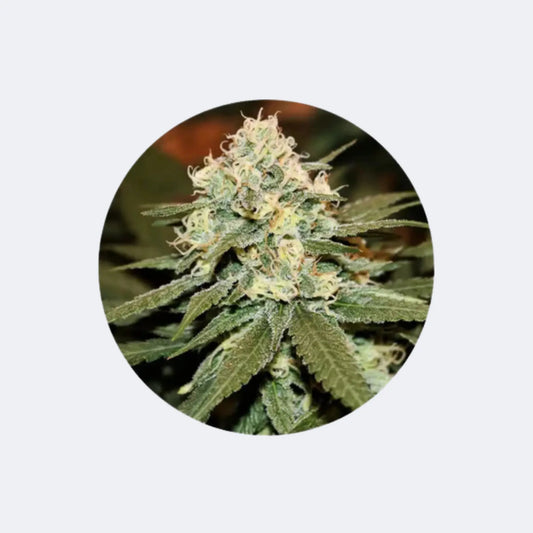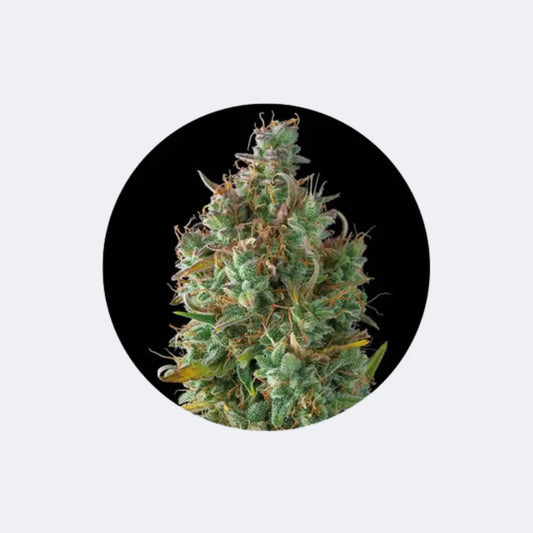
Fertilizers and boosters for cannabis plants
Andreas LeschkeShare blog post
Basically, you should keep in mind that fertilizers and boosters for marijuana only serve to provide our plants with everything they need to grow strong and healthy.
For this reason, all means used to make these beloved miracle plants stronger and more vital should only be used in balanced quantities to avoid over-supply, as otherwise the opposite of the desired goal will be achieved.
One of the most important basics to keep in mind is that after each application of fertilizer and/or booster to the growing medium, the pH value can change. Therefore, it is advisable to check the soil pH after fertilizing the growing medium, which should average between 5.5 and 7.
This can be defined even more precisely due to the fact that most marijuana plants prefer a low pH value of 5.5 to 5.7 in the vegetative phase, while they require a higher pH value between 6 and 6.5 in the flowering phase.
How to lower or raise the pH value can be found in the previous blog post " Recognizing Stress Characteristics and Diseases in Cannabis Plants ."
1. CO2 boost for cannabis plants (from week 3 of the veggie phase)
Boosting the cannabis plant usually begins from week 3, when the plant has already developed into a young weed lady and has passed the cutting age, by placing CO2 in the grow box.
In this way, you give it additional plant air, which produces more energy and consequently grows stronger and faster and is needed by the cannabis plant until the end of the flowering period.
You can find out how to easily make your own CO2 booster in the article " CO2 - Make your own booster for your indoor cannabis plantation "

2. Plant fertilizer (from week 4 of the vegetarian phase)
When it comes to plant fertilizers, it's important to note that the manufacturer's recommended amounts are not a guideline, as the right amount of fertilizer depends on the remaining nutrients in the soil and the extent to which the root system has developed. Other factors, such as light intensity or the genetic makeup of the grass plant, also play a role in determining how much or how little fertilizer it needs.
For this reason, a cautious approach is recommended. As a universal fertilizer for the entire lifespan of the marijuana plant, a tomato fertilizer is perfectly sufficient.
This contains all the essential nutrients the plant needs. It's sufficient to use only three-quarters of the manufacturer's recommended amount, using the same amount of water. This way, the solution is not as concentrated and can be applied to the plant several times within a week. Please only water the soil with the fertilizer solution until it is moist to avoid over-fertilization.
The pH value should then be measured, as tomato fertilizers tend to lower the pH value. If the pH value falls below 5.5, you can raise it again with a little lime and water.
It's sufficient to fertilize the plant with a tomato fertilizer every 2 to 3 weeks during the vegetative phase. If the plant needs more fertilizer, it will let you know!
During the flowering phase, however, the plant needs more fertilizer and boost to produce nice, thick buds. I've had the best results by feeding the plants tomato fertilizer every 10 days during the first four weeks of flowering, and then reducing the fertilizer application to every week during the last four weeks of the flowering period.
What should be noted during the flowering phase is that higher doses of fertilizer will massively lower the pH, whereas our plant needs a high pH of 6 to 6.5.

3. Baking soda or baking powder (pre-bloom)
Baking soda, or baking powder, is a very effective and multifunctional fertilizer. It raises the pH of the soil, which is necessary after applying tomato fertilizer when the pH drops below 6. It also boosts the plant's vitality when used in small amounts.
Please use only very small amounts of baking soda and stop using it after the pre-flowering period.
During the pre-bloom period, it is a reliable partner, serving as a fungicide to create a stable base against possible mold growth and fungal pathogens. However, after the pre-bloom period, lime should be used to regulate the pH of the soil.
4. Alternatives to commercially available fertilizers
Coffee grounds solution as cannabis fertilizer for the vegetative phase:
If you don't want to buy plant fertilizer but still want to provide your plants with additional nutrients, coffee grounds are an excellent growth aid for the vegetative phase. To do this, use 2 g of coffee grounds, mix them with one liter of hot water, and let it stand for 24 hours.
The coffee brew is then filtered through a coffee filter and used to water the plants.
Here, too, water carefully so that the soil is only slightly moist. Afterwards, measure the pH value and adjust if necessary.

Banana tea, the fertilizer for cannabis plants during the flowering phase:
Bananas are known to be high in potassium, a key element needed throughout all stages of the weed lady's life. It's no wonder, then, that it's one of the three main macronutrients used to blend NPK fertilizers.
During flowering, it is important to increase energy reserves so that complex carbohydrates can be built up to produce leaves, stems and flowers, where potassium is an excellent helper to help the plant absorb sugar, starch and carbohydrates better.
Another component of banana tea are amino acids, which can be absorbed and processed by the cannabis plant, thus benefiting cell growth. Therefore, banana tea is not just an organic-mineral fertilizer.
To make banana tea, you need four banana peels and boil them in one liter of water for 10 minutes, stirring constantly. Then add two tablespoons of sugar and stir to combine. Remove the pot from the heat and let it cool.
Once the mixture has cooled, remove the banana peels from the broth and dilute the liquid with 2 liters of water. As a final step, simply stir it thoroughly to blend it, then bottle it and use it as fertilizer.
Please only use this tea after pre-flowering, as it is not needed beforehand. If you use this tea as a fertilizer during the last six weeks of flowering, you can increase your yields by approximately 20%.
5. CAL/MAG fertilizer
There's no set time for when you need to add CAL/MAG fertilizer, as this fertilizer is only used when there's an acute calcium and/or magnesium deficiency. You can find out how to identify a Cal/Mag deficiency in the blog post "Recognizing Stress Signs and Diseases in Cannabis Plants."
Because CAL/MAG fertilizer is a pure "first aid" fertilizer used only in emergency situations involving calcium/magnesium deficiencies, it's not necessary to keep it on hand. You can make it yourself in 24 hours using eggshells and Epsom salts.
How to make this fertilizer yourself can be found in the previous blog post " Make your own CAL/MAG fertilizer ".
Finally, an important note regarding homemade fertilizers: Please use only organic products as ingredients, as these are free of pesticides and chemicals. With non-organic products, there's a risk that your flowers could be contaminated with dangerous chemicals, toxins, and pesticides.
One final tip! You can increase yields by fertilizing, and there are also methods to further increase yields by using MORE fertilizer. This is similar to how competitive athletes require higher nutrient intake.
This way, you can train your cannabis plants using low- and high-stress methods to the point where they require more fertilizer because they grow bushier and more vigorously. We'll discuss how this works in the next blog posts, where we'll examine the various stress training methods for achieving higher yields.
We thank the author Jorge Rieger for this blog post on fertilizers and boosters for cannabis plants. Feel free to follow him on his Facebook account. --> Click here






